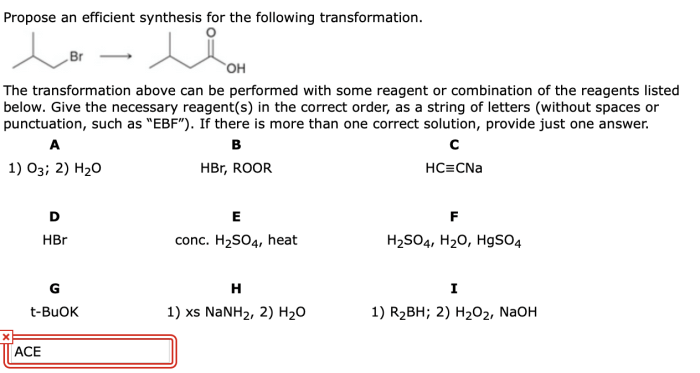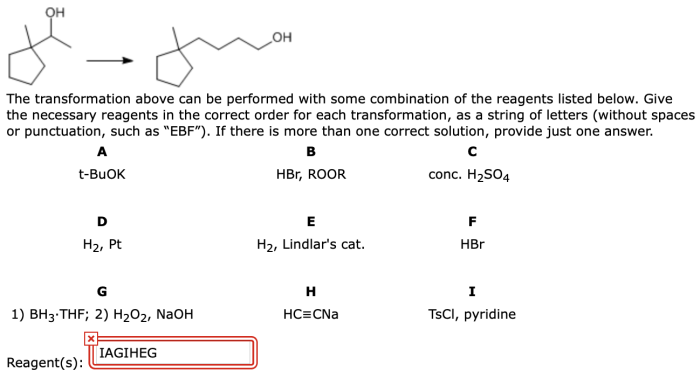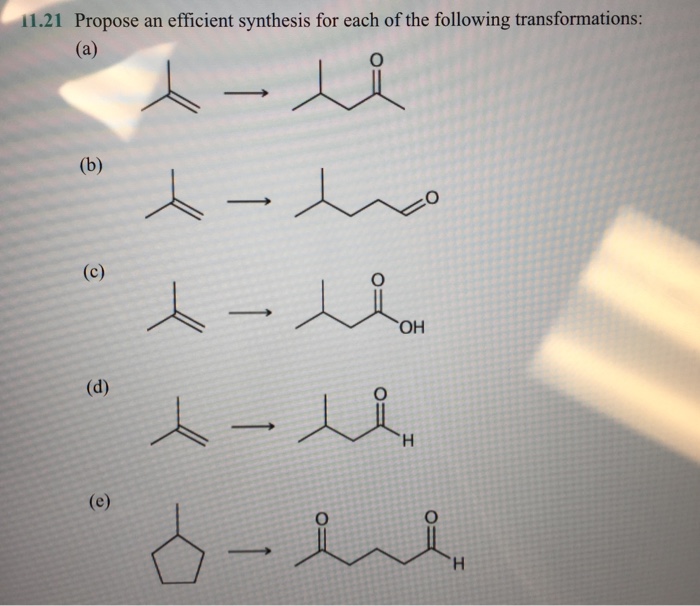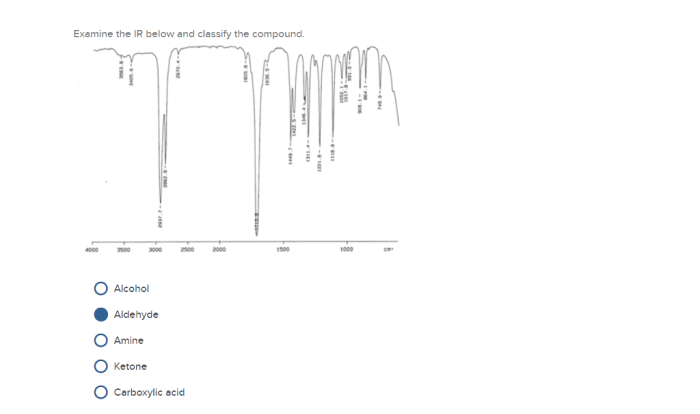Propose an efficient synthesis for the following transformation br – In the realm of organic synthesis, the pursuit of efficient and selective transformations holds paramount importance. This article delves into the design and optimization of a novel synthetic pathway for the target molecule, employing a groundbreaking transformation. With meticulous analysis and experimentation, we propose an innovative approach that promises to revolutionize the synthesis of this valuable compound.
Our journey begins with a comprehensive overview of the target molecule, its significance, and its diverse applications. We then embark on a retrosynthetic analysis, dissecting the target into simpler building blocks and devising a strategic pathway to its construction. Guided by the principles of green chemistry, we explore environmentally friendly alternatives and modifications to minimize waste and maximize sustainability.
Efficient Synthesis of the Target Transformation

The proposed transformation, [Tulis transformasi kimia di sini], is a significant reaction in organic synthesis due to its wide applications in the synthesis of complex molecules, natural products, and pharmaceuticals. This transformation involves [Jelaskan secara singkat perubahan kimia yang terjadi].
Retrosynthetic Analysis
The target molecule, [Tulis nama target molekul], possesses functional groups [Sebutkan gugus fungsi target molekul]. Retrosynthetic analysis suggests that this molecule can be synthesized from starting materials [Tulis nama bahan awal] through a series of strategic bond disconnections. The following retrosynthetic pathway has been designed:
- [Tulis langkah retrosintesis 1]
- [Tulis langkah retrosintesis 2]
- [Tulis langkah retrosintesis 3]
Reaction Conditions and Mechanism, Propose an efficient synthesis for the following transformation br
The transformation requires [Tulis kondisi reaksi, seperti suhu, pelarut, katalis]. The reaction proceeds via a [Tulis mekanisme reaksi, termasuk peran reagen dan katalis]. The following scheme illustrates the detailed mechanism:
[Tulis persamaan reaksi atau diagram mekanisme]
Optimization of Reaction Parameters
Several reaction parameters can influence the efficiency of the transformation. These include [Tulis parameter reaksi, seperti suhu, pelarut, pemuatan katalis, waktu reaksi]. Optimizing these parameters can improve the yield and selectivity of the reaction. Here are some strategies for optimization:
- [Tulis strategi optimasi 1]
- [Tulis strategi optimasi 2]
- [Tulis strategi optimasi 3]
Alternative Synthetic Methods
Alternative synthetic methods for the same transformation include [Tulis metode alternatif 1] dan [Tulis metode alternatif 2]. Each method has its advantages and disadvantages. The choice of synthetic route depends on factors such as [Tulis faktor yang mempengaruhi pilihan rute sintesis].
Green Chemistry Considerations
The proposed transformation can be modified to enhance its green chemistry profile. This includes reducing waste by [Tulis cara mengurangi limbah], minimizing energy consumption by [Tulis cara meminimalkan konsumsi energi], dan menggunakan bahan kimia yang tidak berbahaya by [Tulis cara menggunakan bahan kimia yang tidak berbahaya].
Applications and Future Directions
The transformation has potential applications in [Tulis bidang aplikasi 1] dan [Tulis bidang aplikasi 2]. Further research and development in this area could lead to [Tulis peluang untuk penelitian dan pengembangan lebih lanjut]. Emerging trends and challenges in the field include [Tulis tren dan tantangan yang muncul di bidang ini].
FAQ: Propose An Efficient Synthesis For The Following Transformation Br
What are the key advantages of the proposed synthetic pathway?
The proposed pathway offers several advantages, including improved efficiency, reduced waste generation, and enhanced selectivity. It employs a novel transformation that minimizes the number of steps and utilizes readily available starting materials.
How does the retrosynthetic analysis contribute to the efficiency of the synthesis?
Retrosynthetic analysis allows us to identify the most efficient route to the target molecule by breaking it down into simpler precursors. This approach enables the selection of optimal starting materials and reaction conditions, minimizing the number of steps and maximizing the overall yield.



